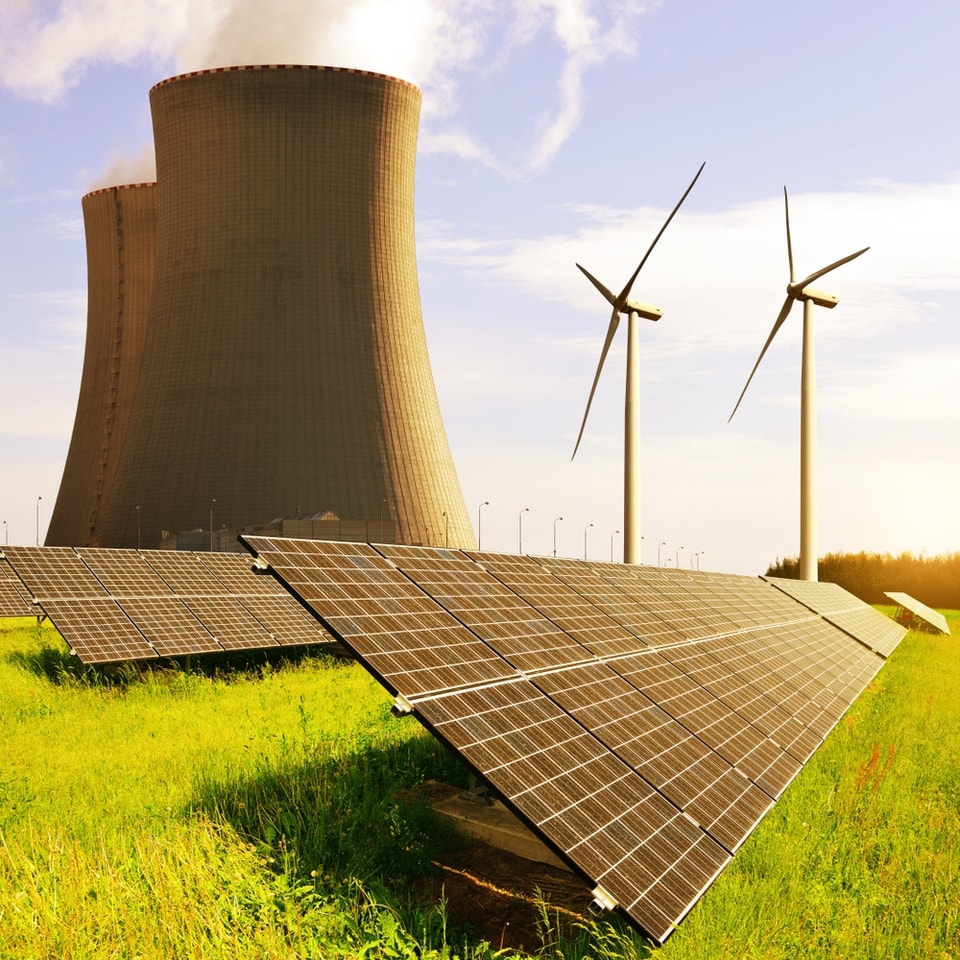Memo Published September 19, 2019 · 7 minute read
How to Talk About Nuclear
Jackie Kempfer & Jared DeWese

Background
The 2020 Democratic presidential campaign is providing a welcome and overdue focus on the most urgent challenge of our generation. Democratic candidates are offering sweeping visions to combat climate change, backed by substantive details, in stark contrast to Trump’s denialism. However, several candidates seem to have stumbled over a key component of a net-zero carbon emissions future: nuclear power.
From the Intergovernmental Panel on Climate Change to the Union of Concerned Scientists, the Nature Conservancy, and the MacArthur Foundation, there is a growing consensus among scientists and advocates that carbon-free nuclear power is crucial to putting America and the world on the fastest path to zero emissions.
We stand with the vast majority of Democrats in believing that the climate crisis requires a massive, all-in mobilization. That means using as many renewables as possible, along with every other carbon-free technology. We also must invest heavily to invent new technologies that fill the gaps and speed deployment. For Democrats who share that commitment, here are some tips on how to talk about nuclear:
1. Remember the scale of the crisis
Democrats are largely united in the belief that the climate crisis is a clear, present, and growing danger. We don’t have time to play favorites with carbon-free technologies: we need every tool available to reduce carbon.
Democratic voters share this sense of urgency. In fact, a Third Way poll of Democratic primary voters who are also active social media users found that even these progressive voters are more supportive of a climate plan that includes nuclear and carbon capture than one with renewables only.
2. Expand the context
This shouldn’t be a conversation about whether we like nuclear energy in its current form or we don’t. While we will need the clean energy from today’s nuclear plants for as long as they continue to operate safely, the conversation about the future of nuclear should take place in the broader context of innovation.
While we have made incredible strides over the last decade in clean energy technologies, we have not come close to reaching the level of innovation needed to truly confront climate change. To do so, we will need breakthroughs in storage, advanced geothermal, carbon capture, and—yes—advanced nuclear. Just as the original prototypes do not resemble today’s solar panels and wind turbines, tomorrow’s nuclear will be very different from the plants of today. The next generation of nuclear power will be more cost-effective and safer than ever. (If it isn’t, it won’t succeed in the marketplace.) This isn’t about choosing one technology over others. It’s about investing in every promising carbon-free technology.
3. Embrace the evidence
Democrats believe in evidence and data. In the latest IPCC special report, almost every mitigation scenario that limits warming to 1.5 degrees includes a role for nuclear power, with many scenarios showing a large increase. Several recent analyses conclude that a system with a combination of carbon-free resources like nuclear power along with renewables will get us to zero emissions by 2050 at the lowest cost. In fact, including technologies like nuclear could cut roughly $500 billion off the price tag of transitioning our grid.
We also have real-world experiments to guide our decision-making. France, the UK, and Germany—all committed to cutting carbon emissions—have taken different paths on climate. France has some of the lowest-carbon power in Europe, thanks to nuclear plants that provide three-quarters of its electricity and a growing supply of renewables. The UK is making drastic emissions cuts using a combination of nuclear, renewables, and natural gas to drive coal off the grid (recently setting a record-breaking three weeks without coal-fired power). Germany, on the other hand, announced in 2011 that it would move away from nuclear energy. While the country has increased its renewable deployment, its carbon emissions have actually grown. Why? Because coal filled the gaps. If fighting climate change is the goal, cutting emissions should take priority over promoting just a handful of favorite technologies.
4. Reject fear-mongering
Candidates should avoid focusing on worst-case scenarios about nuclear because their likelihood is vanishingly small. In the United States, there has never been a nuclear reactor accident that has resulted in human death from radiation exposure. Other than Chernobyl, there’s never been such a fatal accident anywhere. Democrats know how to reject Republican scare tactics around issues like immigration and criminal justice reform, and those same instincts should govern their response to nuclear power. Instead, they should review the facts and make clear that nuclear energy is safe, and advanced nuclear reactors will be safer still.
5. Answer legitimate questions
Rejecting fear-mongering still leaves legitimate questions, including those around waste storage. But the scope and complexity of such challenges pale in comparison to solving the climate crisis. If we can decarbonize our entire economy and save the planet for future generations, we can certainly figure out how to store nuclear waste safely. In fact, we already do. Spent nuclear fuel is stored in concrete casks that are designed and regulated to withstand the most extreme circumstances. The Nuclear Regulatory Commission requires them to remain intact after a 30-foot drop onto a rigid surface followed by a fully engulfing fire of 1475 degrees Fahrenheit for 30 minutes. There has never been a radiation release from stored nuclear waste.
The challenge with nuclear waste is not with the technology, it’s with the policy. Under the Nuclear Waste Policy Act, the federal government is required to take ownership of all the nation’s nuclear waste and store it. But Yucca Mountain is the only legally mandated permanent repository in the US, and the strenuous opposition to the site in Nevada has kept it idle. Republicans, including President Trump, continue to insist that Yucca is the only suitable site for waste disposal, despite other options that could have local support. As a result, the government has been paying penalties to utilities for decades, at a current price tag of $7 billion and growing. So while the casks can withstand most anything, the waste storage debate has been cracked open by political squabbling and opportunism.
6. Imagine the possibilities
Democrats should embrace the transition to clean energy as an exciting economic opportunity. It can and should be a massive creator of jobs, as well as a force for the reduction of opportunity inequality in the United States. And getting cleaner will also help restore environmental justice.
While lawmakers and candidates have talked extensively about the (very real) job creation associated with clean energy investments, they have talked less about how technological innovation like advanced nuclear energy will help maintain American leadership in the global economy. In the decades ahead, every country must eliminate carbon emissions. Whichever nation leads the way on innovation—battery storage, next-generation geothermal technology, carbon capture, new airplane fuels, and, yes, advanced nuclear reactors—will create good jobs and massive economic opportunity. We still have a chance to win that race, but our time is growing short.

